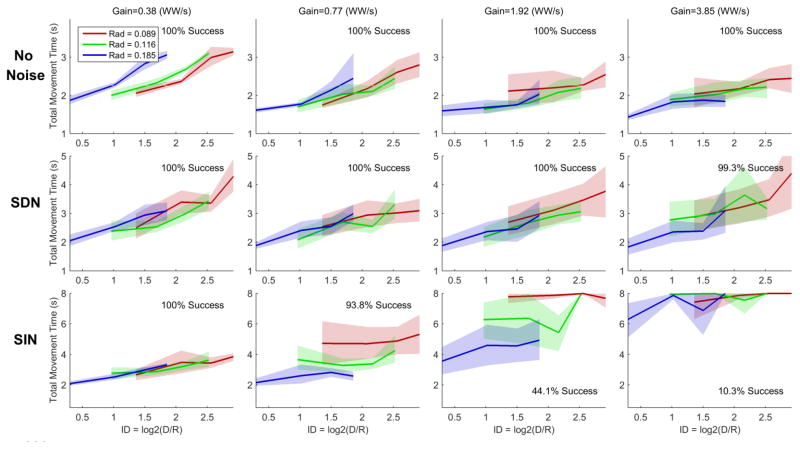Figure 8.
Movement time data from participant A (1 of 3 able-bodied volunteers) using a joystick to complete the random target task under different gain and artificial noise conditions. The cursor’s velocity is smoothed and integrated in the same way as it is under iBCI control, but the output of the decoder is determined by the joystick position instead of neural activity. Performance is relatively robust to gain under the no noise and signal-dependent noise (SDN) conditions, but rapidly deteriorates as gain is increased under the signal-independent noise (SIN) condition. Consequently, Fitts’ law is a good descriptor of movement times in the no noise and signal-dependent noise conditions, but breaks down when signal-independent noise is added (the radius-specific lines do not overlap). Note that failed trials (where movement time exceeded 8 seconds) are reported as 8 second movement times.

